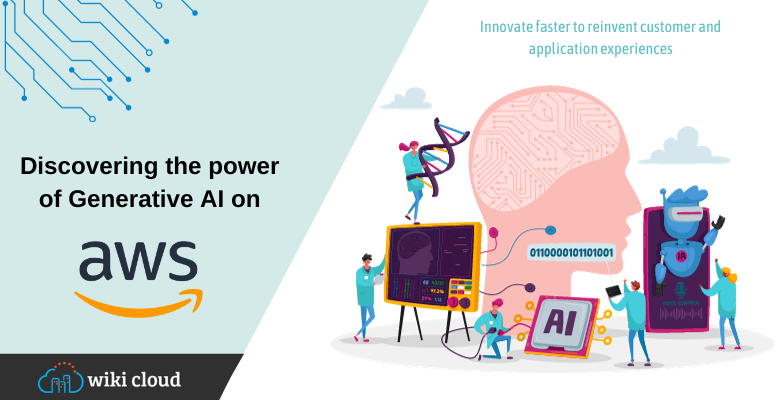Introduction
Currently, we have witnessed the growing relevance of applications of Generative Artificial Intelligence (GenAI) that have captured our attention and inspired our imagination. These new applications represent a turning point for the Artificial Intelligence (AI) and Machine Learning (ML). This paradigm shift of IA y ML has been in the works for several years and has experienced significant boost thanks to the scalable computing capacity we have in the cloud and the massive proliferation of data and the rapid advancement of AI and ML technologies that have accelerated this evolution. Customers across industries are rapidly adopting AI and ML technologies to transform their operations and business models. We are living in an exciting time as many customer experiences and applications are being reinvented with GenAI.
"Generative AI isn't just a technology or a business case, it's a key part of a society where people and machines work together." (Gartner®).
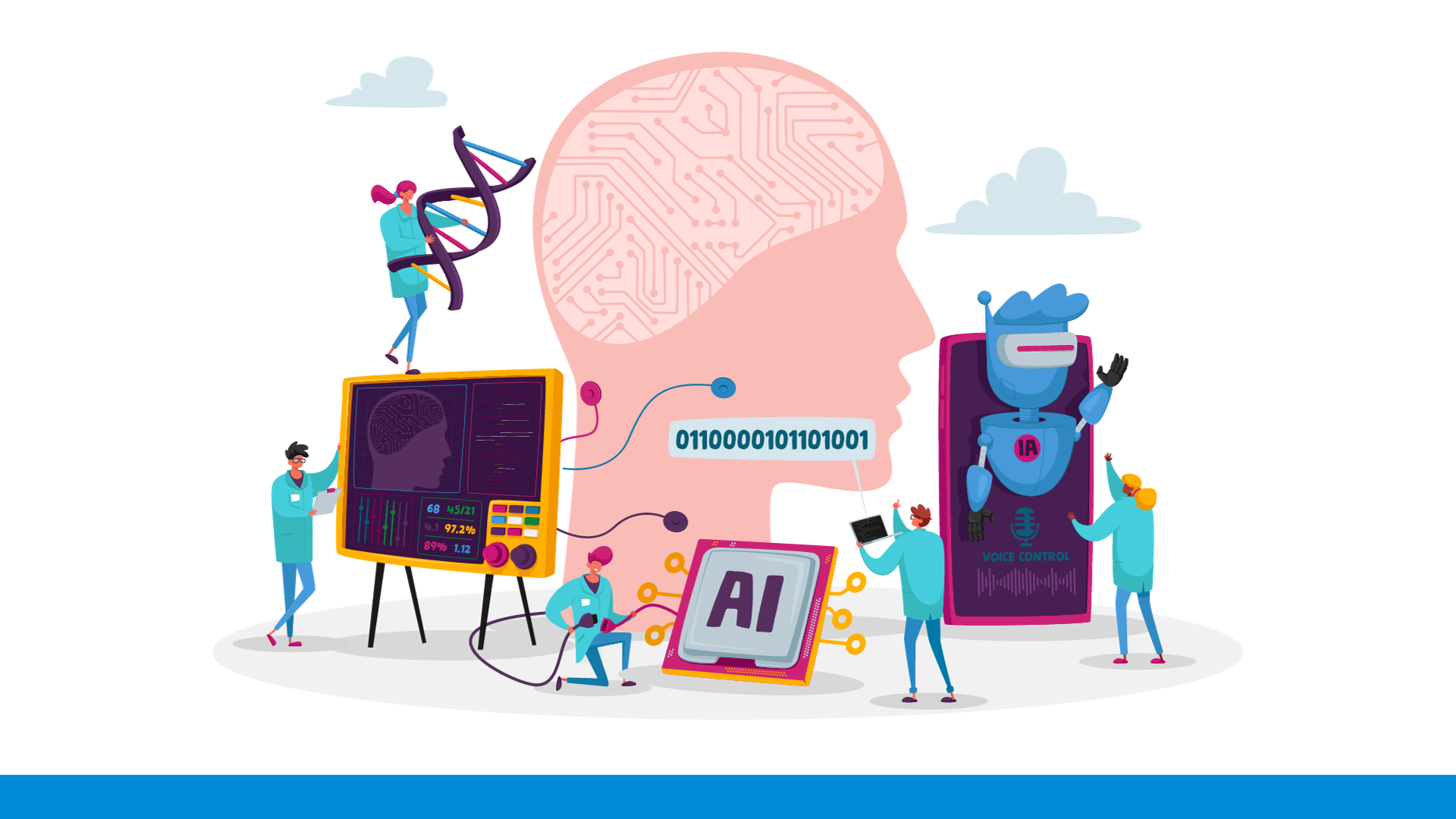
What is Generative AI?
Now we ask ourselves, What exactly is generative AI?. GenAI is a type of artificial intelligence that can create new content and ideas, including conversations, stories, images, videos and music. Like all artificial intelligence, GenAI works with machine learning models. However, GenAI is powered by very, very large models that are pre-trained on large collections of data and are commonly known as basic models or foundation models (FM). Recent advances in machine learning have led to the emergence of foundation models containing billions of parameters or variables.
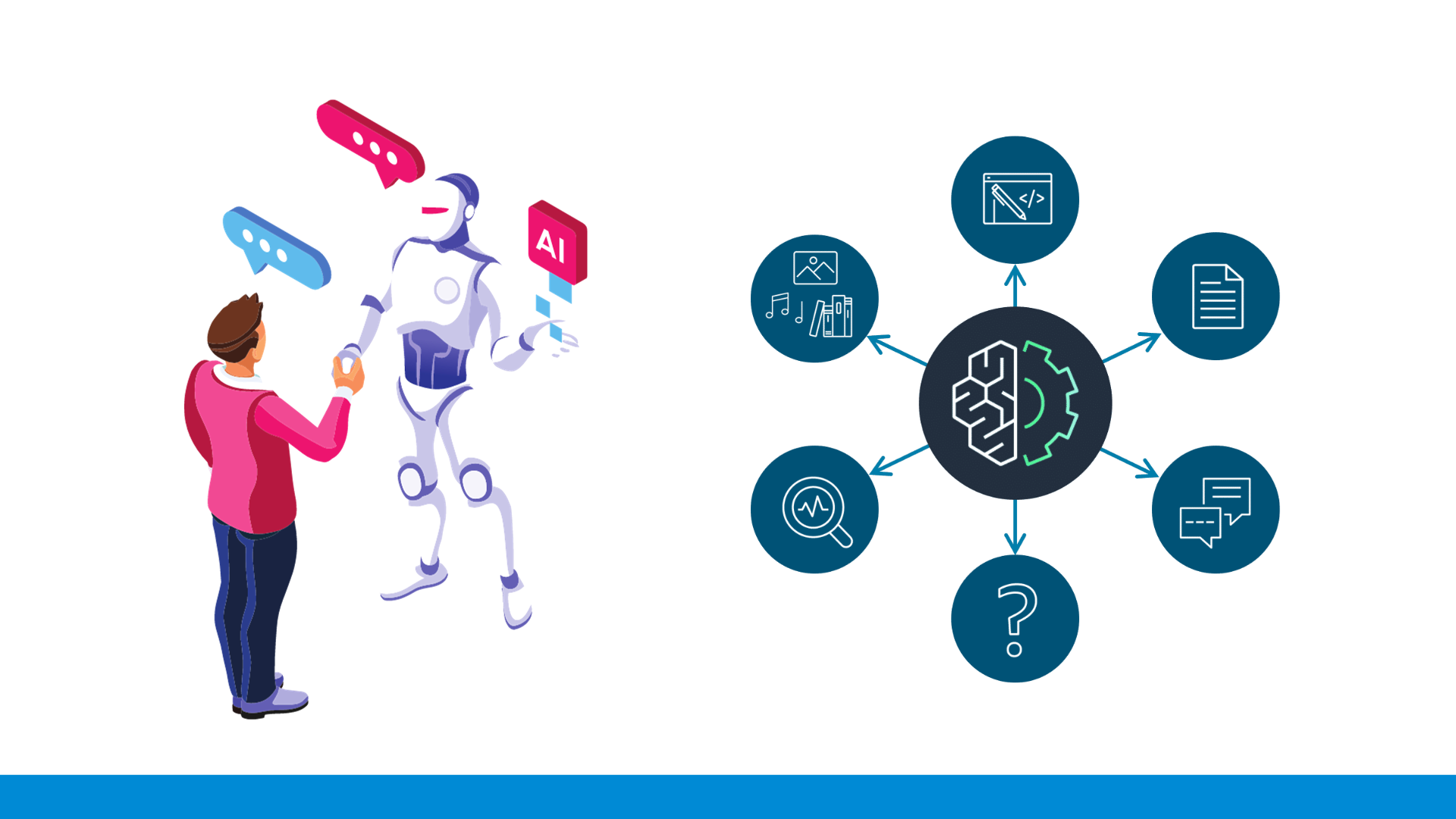
What types of foundation models (FM) are currently on the market?
Currently, there are three main types of FM available on the market:
- Text to Text: These natural language processing models are the first type of foundation models developed by startups in the ML research community and established companies, which have the ability to summarize text, extract information, answer questions, and generate content such as blogs or product descriptions.
- Text to embeddings: These basic or foundation models compare user-provided text input in a search bar with relevant index data and connect the dots between the two (search and indexes), making meaningful connections between both sets of information. This translates into more accurate and relevant search results. An example might be the Amazon store product search that uses this type of FM to compare a user's question to catalog data and then presents the user with more accurate and relevant results.
- Multimodal: Multimodal foundation models are an emerging category of basic or foundation models that can generate images based on natural language text input provided by the user. This approach represents an interesting convergence between text processing and visual content generation.
What are the common use cases or applications of generative AI?
From these types of FM, users or clients can use these models to create solutions such as:
- Creation of original content, such as stories, essays, songs, creative art, blogs, and images.
- These models are being used to accelerate application development with automatic code recommendations in the developer's integrated development environments or IDEs, such as Amazon CodeWhisperer, an AI coding plugin that is generating excellent results in terms of developer productivity.
- Creation of chatbots, conversational interfaces and virtual assistants to improve the customer experience. Question and answer solutions, where FMs are used to search, find and synthesize answers from a large collection of data, such as the Internet itself.
- Solutions that provide summaries of textual content, including articles, blog posts, books, and documents.
Gartner and Generative AI
According to studies and research carried out by the consulting firm Gartner®, it highlights GenAI as one of the main strategic and disruptive technological trends for the year 2023.
Within these investigations, Gartner® mentions that: “Venture capital firms have invested more than $1.7 billion of dollars in generative AI solutions over the past three years, and AI-enabled drug discovery and AI software coding receive the most funding", which means that for those of us who work in the tech environment, GenAI is being used to improve software development by simplifying programming tasks and automating processes.
This creates challenges for executives who must identify where and how GenAI fits into existing and future business and operating models in organizations, how to experiment productively with GenAI use cases, and how to prepare for the long-term disruptions and opportunities resulting from GenAI trends.

In a very short time after becoming known and starting to work with GenAI solutions, this technology has had a great impact on product development, customer experience, employee productivity and innovation. Additionally, GenAI is prepared to have an increasingly stronger impact on companies in the next five years.
Gartner® predicts at the business level that:
 |
By 2025, 70% of enterprises will identify the sustainable and ethical use of AI among their top concerns. |  |
By 2025, 35% of large organizations will have a chief AI officer who reports to the CEO or COO. |
 |
By 2025, the use of synthetic data will reduce the volume of real data needed for machine learning by 70%. |  |
By 2025, 30% of outbound marketing messages from large organizations will be synthetically generated. That’s up from less than 2% in 2022. |
 |
Through 2026, despite all the advancements in AI, the impact on global jobs will be neutral — there will not be a net decrease or increase. |  |
By 2030, AI could reduce global CO2 emissions by 5 to 15% and consume up to 3.5% of the world’s electricity. |
 |
By 2030, decisions made by AI agents without human oversight will cause $100 billion in losses from asset damage. |  |
By 2033, AI solutions will result in more than half a billion net-new human jobs. |
Gartner® predicts at the GenAI solutions level that:
- By 2024, 40% of enterprise applications will have embedded conversational AI, up from less than 5% in 2020.
- By 2025, 30% of enterprises will have implemented an AI-augmented development and testing strategy, up from 5% in 2021.
- By 2026, generative design AI will automate 60% of the design effort for new websites and mobile apps.
- By 2026, over 100 million humans will engage robocolleagues to contribute to their work.
- By 2027, nearly 15% of new applications will be automatically generated by AI without a human in the loop. This is not happening at all today.
Source: Gartner®
Note: Synthetic data is information that is artificially generated to replace real historical data for the purpose of training AI models.
Generative AI on AWS
What experience does Amazon have with AI and ML innovation?
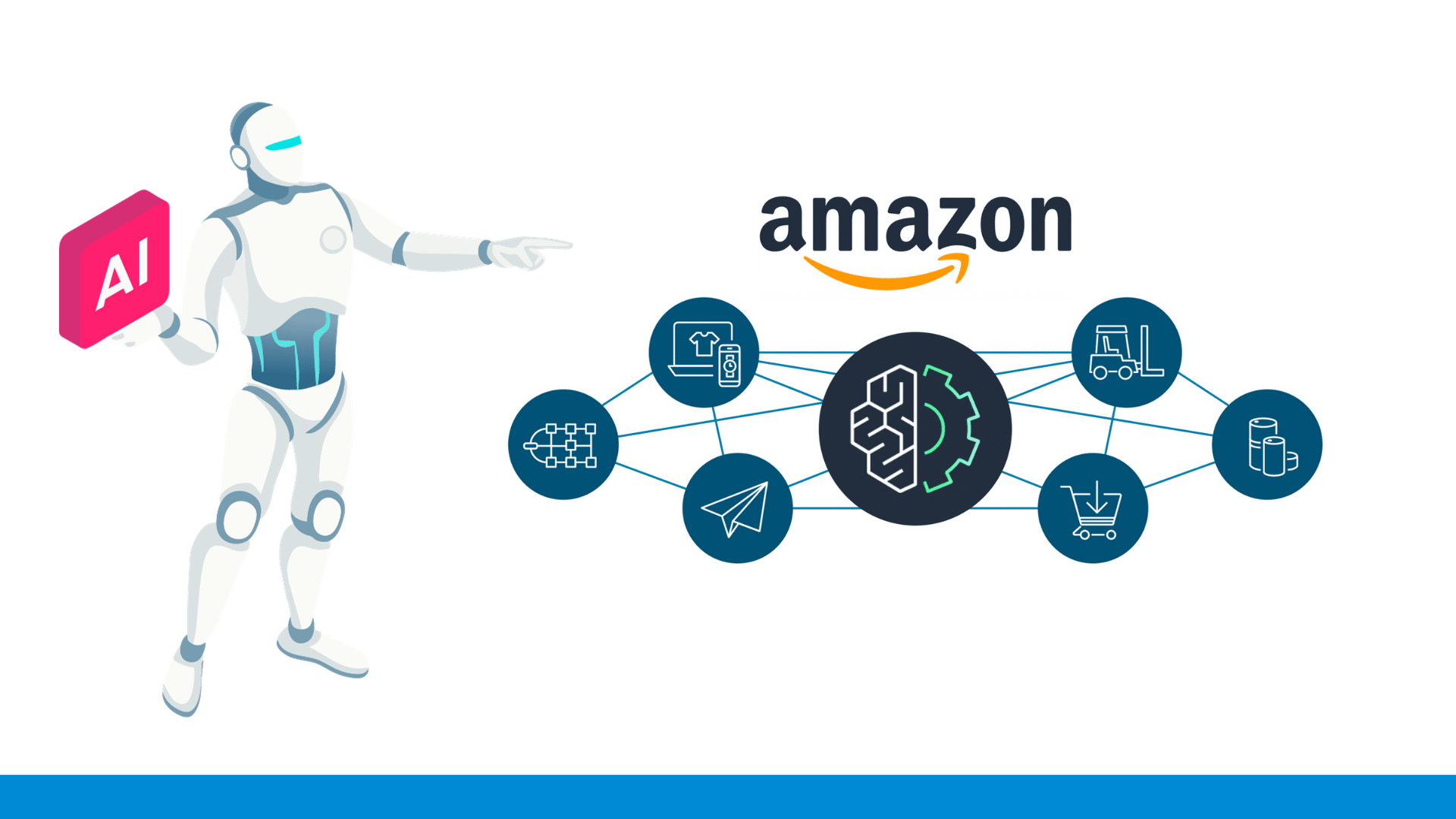
Amazon has maintained a constant focus on AI and ML for more than two decades. In fact, these technologies power many of the capabilities that customers experience when using Amazon. Could say that AI and ML innovation is in Amazon's DNA where thousands of Amazon engineers are committed to these technologies. At Amazon, ML is the heart of AI and plays a critical role in a number of crucial areas, including the e-commerce recommendation engine, fulfillment center optimizations, supply chain management, forecasting and capacity planning, Alexa's billions of weekly interactions, the revolutionary Prime Air drone delivery service, and the computer vision technology applied in Amazon Go. The latter allows consumers to select items and leave the store without having to pay conventionally, thus marking a milestone in retail innovation.
Generative AI services and solutions on AWS
Below, we will mention the services and solutions available on AWS to work with GenAI:
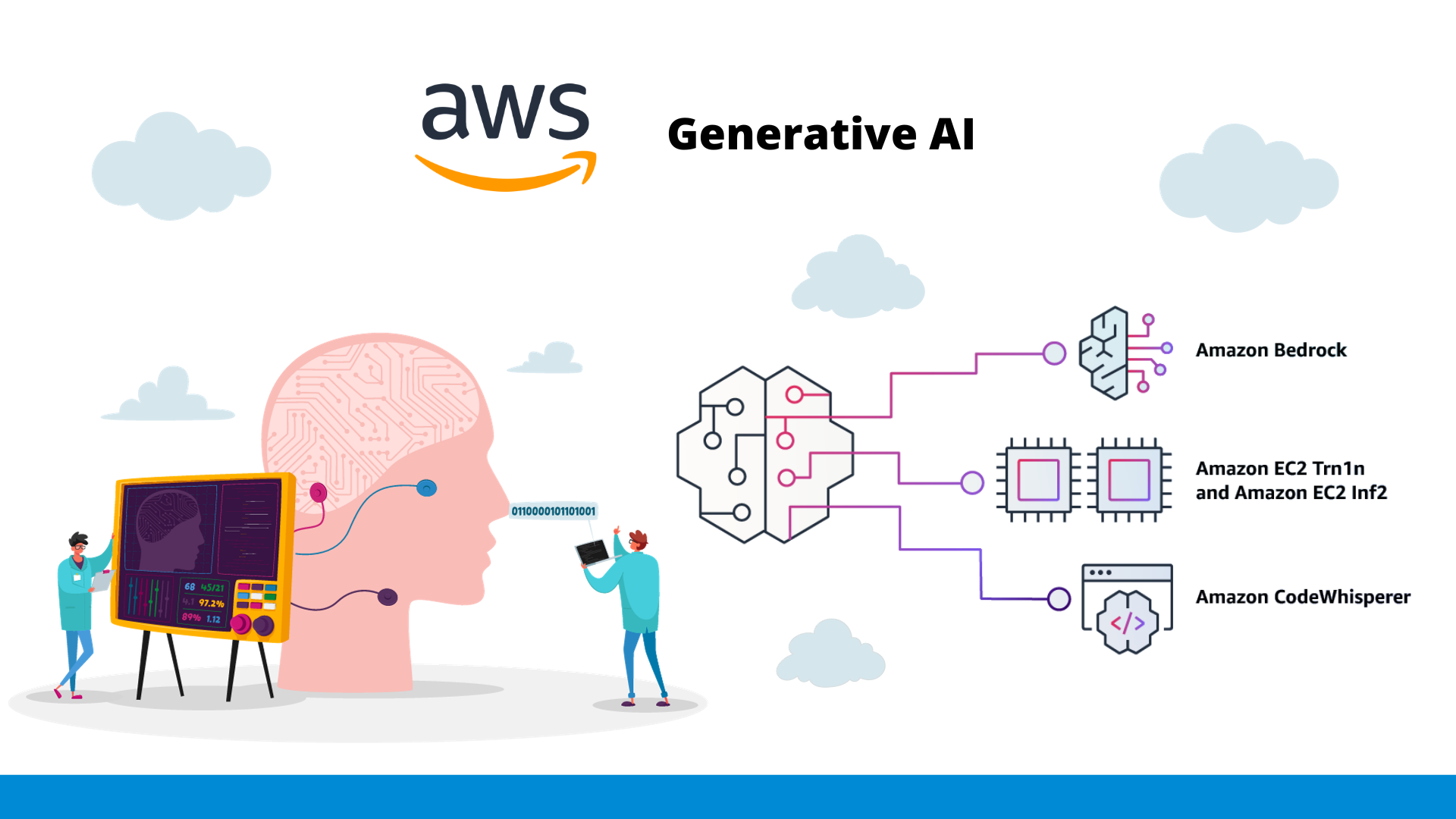
- Amazon Bedrock: It's a fully managed service that makes FMs from top AI startups and Amazon available through an application programming interface (API). This gives users the flexibility to select from a variety of FMs, allowing them to find the option that best fits their specific use case. In essence, Amazon Bedrock emerges as the most accessible and efficient solution for building and expanding GenAI applications using foundation models, simplifying the entire process.
- AWS Inferentia and AWS Trainium Amazon EC2 instances: AWS Inferentia and AWS Trainium are machine learning accelerators that AWS designed from the ground up. The first generation of AWS Inferentia offers significant performance benefits up to 2.3x and up to 70% lower cost per inference than comparable Amazon EC2 instances, which are reflected in cost savings for deploying smaller models. AWS Trainium offers training cost savings of up to 50% over comparable Amazon EC2 instances and is designed for machine learning workloads. AWS Trainium and AWS Inferentia were built to train and deploy ultra-large GenAI models with hundreds of billions of parameters.
- Amazon CodeWhisperer: It's an AI coding service trained on billions of lines of Amazon code and open source. CodeWhisperer helps developers quickly write secure code by generating full-line and full-function code suggestions in an integrated development environment (IDE). The generated code is produced in real-time and is based on natural language feedback from the developer and surrounding code. It allows you to work across 15 programming languages, such as Python, Java, and JavaScript, and your favorite integrated development environments (IDEs), such as VS Code, IntelliJ IDEA, and AWS Cloud9, the AWS Lambda console, JupyterLab, and Amazon SageMaker Studio.
- FMs with Amazon SageMaker JumpStart: FMs in Amazon SageMaker are a good solution for customers who want to maintain full control over their infrastructure and deployment of basic models. SageMaker JumpStart is Amazon SageMaker's machine learning hub that helps customers discover integrated content to build their next machine learning models. SageMaker's JumpStart content library consists of hundreds of built-in content algorithms, pre-trained models, and solution templates.
Conclusions
Exploring the power of GenAI in the AWS environment reveals a horizon of infinite possibilities for innovation and transformation across a wide range of industries and applications. The combination of scalable cloud computing power, foundation AI models, and AWS's ongoing commitment to technical excellence offers businesses and developers an exceptional platform to drive creativity and efficiency in projects. From generating rich content to solving complex problems, GenAI on AWS is paving the way to a future where imagination is the only limit, and where innovative solutions powered by GenAI have the potential to revolutionize our lives, where only a few years ago they seemed unattainable. Collaborating with AWS on this exciting journey can make a difference on the path to excellence in GenAI and transform our lives and our businesses.
Resources
Check out the following resources to learn more about GenAI on AWS:
- Explore Generative AI on AWS
- Amazon Bedrock, the easiest way to build and scale generative AI applications with FM.
- Amazon CodeWhisperer, an AI coding plugin that helps you build apps faster and more securely.
- AWS Trainium, a high-performance ML training accelerator, designed by AWS.
- AWS Inferentia, high performance at lowest cost on Amazon EC2 for deep learning inference.
- Amazon SageMaker JumpStart, an ML hub that can help you accelerate your ML journey.
- Announcement of new tools to create with generative AI on AWS
Hope will be useful.
Best Regards,
Follow us:

